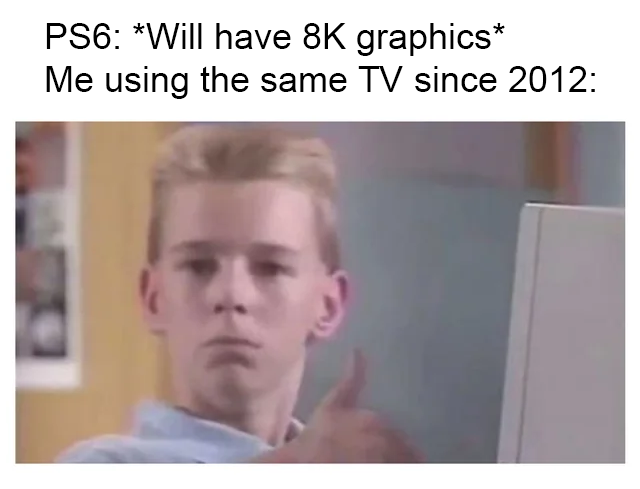this post was submitted on 12 Feb 2024
1354 points (98.6% liked)
memes
10267 readers
3067 users here now
Community rules
1. Be civil
No trolling, bigotry or other insulting / annoying behaviour
2. No politics
This is non-politics community. For political memes please go to [email protected]
3. No recent reposts
Check for reposts when posting a meme, you can only repost after 1 month
4. No bots
No bots without the express approval of the mods or the admins
5. No Spam/Ads
No advertisements or spam. This is an instance rule and the only way to live.
Sister communities
- [email protected] : Star Trek memes, chat and shitposts
- [email protected] : Lemmy Shitposts, anything and everything goes.
- [email protected] : Linux themed memes
- [email protected] : for those who love comic stories.
founded 1 year ago
MODERATORS
you are viewing a single comment's thread
view the rest of the comments
view the rest of the comments

Whatever the resolution of 'real life', what matters is at what point our little eyes and brains no longer can perceive a difference.
In average scenery, the general consensus is about 60 pixels per degree of vision. If you have something a bit more synthetic, like a white dot in empty space, then that sort of specific small high contrast would take maybe 200 pixels per degree to ensure that the white dot is appropriately equally visible in the display versus directly seeing. A 75" display 2 meters out at 4k is about 85 pixels per degree. This is comfortable enough for display.
Similar story with 'frames per second'. Move something back and forth really fast and you'll see a blurry smear of the object rather than observing it's discrete movement. So if you accurately match the blurring you will naturally see and do low persistence backlight/display, you'll get away with probably something like 60 FPS. If you are stuck with discrete representations and will unable to blur or turn off between meaningful frames, you might have to go a bit further up, to like 120 or 144 FPS.
It's possible to argue motion blur looks better, but at least in Rocket League, it makes it insanely hard to play